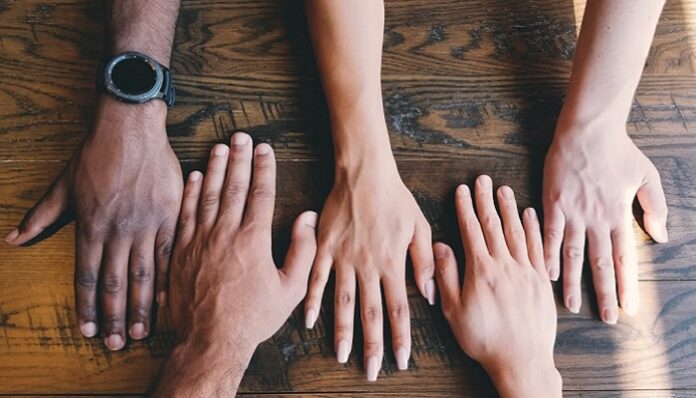
Diversity in the modeling field, specifically for stock photos, was something I only considered once I started working in journalism. For many online and print publications like The Seahawk, multimedia is used alongside the written text in an article, which often includes stock photography. There are many websites with free and subscription-based stock photography. But one thing they do not have a lot on any site is diversity.
A quick Google search for people in stock photography will bring up many photos; most people on stock photography websites, though, look the same. If I look up photos for people, the first images that come up show thin, white people. Searches for couples almost exclusively bring up heterosexual and male/female-presenting couples. People with disabilities rarely show up in searches for stock photography unless it is specified.
I have to search for “people of color” or “LGBT” for stock photography to see more representation. Even then, the options are limited and do not bring as many results as simply typing in “people” would (which would lend itself to the majority and not much variety in models).
This is a problem in many ways.
For one, it hinders my writing. When I write an article, I want to find a photo that complements the topic. It is not enough to write the article; the photo also needs to tell the story. After all, it is the first thing people see when they look at articles. Photography is crucial to the storytelling process. So, if I write about television shows featuring people of color in the lead or queer-friendly books, I want photos representing that topic. But how well can I tell a story if my photography options are limited?
The second (and perhaps most important) reason is that representation truly matters. We live in a diverse world. If I have to specify that I am looking for a nonwhite person to get a photo of a person of color, as opposed to people of various races showing up, when I do a general search, that is a problem. It says that there is a norm. There is a norm of what readers think people look, talk, act, and behave like.
We still live in a world where there is a dominant group of people, and everyone else is thought of as “other.” And that is not something that is purely the fault of photographers in stock photography: it is a societal problem. It will take a lot more than adding inclusivity in photography to dismantle the systems that marginalize people.
But stock photography can help add diversity to the world. In fact, some of them already have.
Some websites focus specifically on diversity for free stock photography or do a better job of including diversity on the first search for photos. There is progress; we simply need more.
Having people of color show up in photography more often is progress. Showing queer couples is progress. Taking photos of models with different body shapes who do not all look the same is progress. It will take a while and have to involve people working behind the cameras to be different themselves — not people from the same or similar groups. It is going to take a lot to make that change, but it is a change that is worthwhile to me.
Not only will it improve the photography content, but it will also send a subtle yet important message to readers: everyone matters.
Featured image via Clay Banks on Unsplash


















